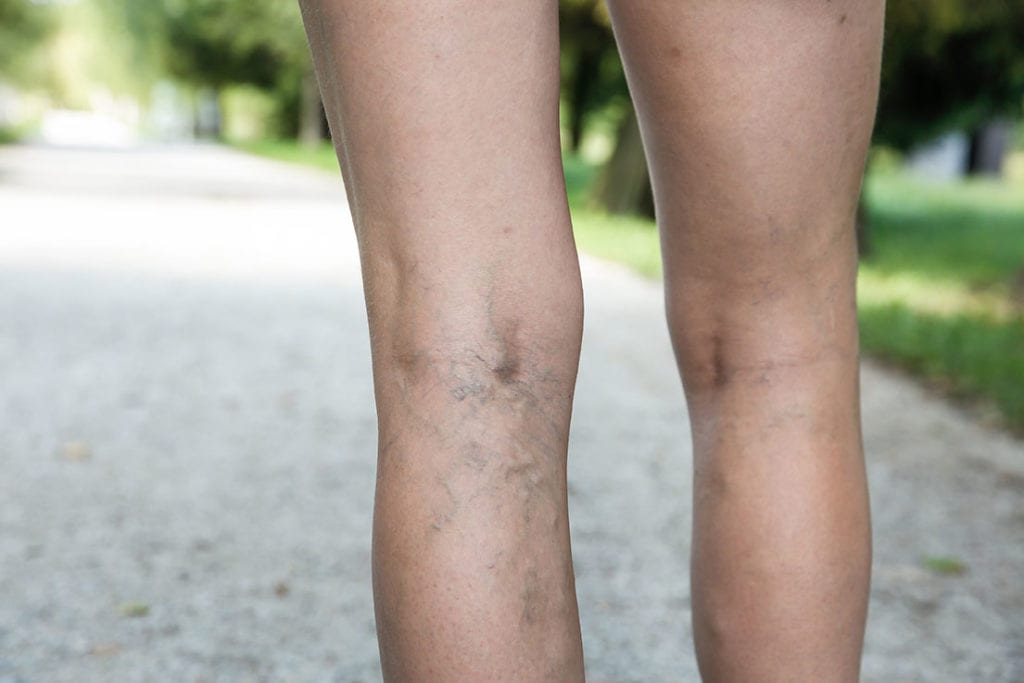Varicose Veins
What Are Varicose Veins?
Varicose veins are twisted, bulging veins. Though any superficial vein (close to the skin’s surface) may become varicose, the leg veins are most commonly affected. Gravity and the increased pressure on the veins of the lower body from standing are a main cause.
Some people may view varicose veins as only a cosmetic concern, most often when they are not causing problems. Varicose veins may or may not cause pain, depending on the individual. However, varicose veins can cause many symptoms including aching and heaviness and can lead to more serious health problems.
Contact Us
The main cause of varicose veins is weakness in the walls of the veins or damaged valves in the veins. Your arteries carry blood from your heart to the rest of your body, and the veins return the blood from the body back to your heart for recirculation. To return blood to your heart, your veins must work against gravity, forcing blood to flow upward.
To do this, muscle contractions in your lower legs act as pumps and small valves in your veins open as blood flows back toward your heart. The valves then close to stop blood from flowing backward. If the valves become weak or damaged, blood can flow backward and pool in the vein, causing the veins to stretch, bulge and twist.

Spider veins are similar to varicose veins, but much smaller. Spider veins are much closer to the surface of the skin and are often red, blue or purple, vary in size, and often have the appearance of a spider’s web. They typically occur on the legs, but spider veins can also appear on the face or hands.
The cause of spider veins is the same as varicose veins, as are the risk factors. However, they tend to be more of a cosmetic concern for many people. Some discomfort may be present with spider veins though.
Signs and symptoms of varicose veins include:
- Dark purple- or blue-colored veins
- Twisted and bulging veins
- Swelling in the lower legs
- Achy or heavy feeling in the legs
- Muscle cramping in the lower legs
- Burning and throbbing sensations
- Worse pain after sitting or standing for a long time
- Itching around one or more of the veins
- Skin discoloration around a varicose vein
[/ttm_list_ordered]
Except for weight, most risk factors for developing varicose veins are not controllable:
- Heredity. First, and most importantly, a family history of varicose veins increases risk.
- Increasing age. The risk of varicose veins increases with age due to normal wear and tear on the valves in the veins that help regulate blood flow. Eventually, the valves are weakened enough to allow some blood to flow back into the veins where it collects and pools instead of flowing back up to the heart.
- Female sex. Hormonal changes may be a factor as female hormones can relax vein walls. Some hormone treatments, such as birth control pills, may increase the risk of varicose veins.
- Pregnancy. The increased volume of blood in the body needed to support the growing fetus can cause enlarged veins in your legs. Hormonal changes of pregnancy may also affect risk.
- Obesity. Being overweight puts added pressure on the veins.
- Standing or sitting for long periods of time. Being in the same stationary position for long periods does not allow blood to flow well.
Diagnosing varicose veins includes a physical exam. You will be asked to describe any pain or symptoms in your legs. The doctor will look at your legs while you’re standing to observe any swelling. An ultrasound imaging test may be ordered to see if the valves in your veins are functioning normally or to look for evidence of a blood clot.
Treatment of varicose veins may involve self-care measures, such as exercise, elevating the legs and especially wearing compression stockings. A pain-relieving anti-inflammatory cream may also be prescribed. These self-care measures may help control the pain and discomfort and also stop varicose veins from getting worse.
However, when varicose veins continue to worsen, become more painful, or are bothering you in their appearance, procedures are available to treat the condition that can close or remove the damaged veins.
- VenaCure Endovenous Laser Treatment – The EVLT procedure uses a thin laser fiber threaded into the affected vein through a tiny point in the leg. The laser targets water with energy, efficiently heating the vein and providing an optimal removal of the damaged vein tissue. The EVLT procedure is a quick and effective method for treating varicose veins, typically covered by insurance, and done in an office visit with no anesthesia necessary.
- Sclerotherapy – Sclerotherapy treatment is used to treat small varicose veins and spider veins. An irritant is injected into the affected vein that causes the vein to constrict and gradually be reabsorbed by the body. This redirects blood flow to other healthier veins. Over time, the injected vein will fade. The procedure is mostly painless and done in 15-20 minutes. Sclerotherapy can also reduce the symptoms of varicose veins, such as aching, swelling, burning and night cramps. Sclerotherapy may also be used to treat spider veins.
- Ambulatory Phlebectomy – Ambulatory phlebectomy is an outpatient procedure that removes leg veins through tiny, slit-like incisions in the skin. This procedure is used on veins that are too large to be treated with sclerotherapy. Ambulatory phlebectomy is performed under local anesthesia so that patients do not feel pain during the procedure.
If you’re concerned about how your veins look and feel or self-care measures haven’t helped, contact The Vein Institute of Hunterdon today to make an appointment for an evaluation and to discuss your treatment options.
or schedule a free consultation to learn more!
